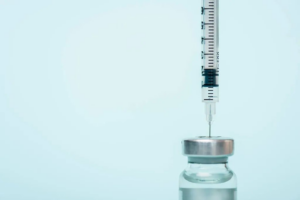
How can I tell if I have a new crown infection? How can the severity of the infection be differentiated?
At present, the global epidemic of New Coronavirus pneumonia is still in an epidemic situation. The pathogenicity and virulence of the epidemic strain of Neocoron virus Omicron variant in China has been significantly reduced, and the number of infected patients is mostly mild or asymptomatic, with a relatively small number of severe cases. How can I tell if I am infected? When do I need to be hospitalized? What is the difference between nucleic acid testing and antigen testing ……
Recently, He Yingli, an expert from the provincial medical treatment team and the chief of the infection department of Xi’an Jiaotong University First Affiliated Hospital, gave answers to these questions.
Why are there so few asymptomatic infections when there are only mild cases around?
Some people feel that “there are only a few asymptomatic infected patients around”. The reason for this feeling is that the current detection strategy and prevention and control measures have changed. The sensitivity of nucleic acid testing was higher than that of antigen testing, and now many asymptomatic infections cannot be accurately detected by antigen testing kits. This has created the “illusion” that symptomatic infections are more prevalent.
How can I tell if I am infected with NCCV?
For the diagnosis of NCCV infection, the “New Coronavirus Pneumonia Treatment Protocol (Trial Version 9)” clearly states that the diagnostic criteria are “epidemiological history + clinical manifestations (respiratory symptoms, lung imaging, laboratory tests) + pathogenic tests (nucleic acids, antibodies)”. However, as the situation changes, the significance of epidemiological history for follow-up decreases, nucleic acid testing is replaced by antigen, and the value of antibodies as a diagnosis decreases after widespread vaccination. Therefore, the diagnosis is now mainly clinical presentation and antigen testing (patients requiring hospitalization still need further nucleic acid testing).
It is important to note that a portion of the population now has fever that is not a neocoronavirus infection. In general, winter is the peak time for the appearance of febrile illnesses, and not all fevers are due to neo-coronavirus infections, but may also be due to the common cold, influenza, and other infections (such as hemorrhagic fever, mycoplasma infections, myocarditis, urinary tract infections, cholecystitis, appendicitis, etc.).
What is the difference between nucleic acid testing and antigen testing?
Previously, we used “positive nucleic acid test” as a criterion to confirm the diagnosis of Neocon. Now, we use antigen testing as a secondary test. The antigen test is simple, convenient, rapid, and can be done independently at home, but it is less sensitive than the nucleic acid test and has some false negatives. The difference between the two testing methods has resulted in many asymptomatic infected individuals who test positive for nucleic acid being “healthy” using antigen testing. In fact, many patients with a low viral load will not be detected by antigen testing.
What is the severity of the virus in an infected person?
After infection with NCCV, patients are divided into asymptomatic patients and patients with mild, common, severe, and critical disease according to their symptoms.
Asymptomatic infected patients test positive for nucleic acid of the new coronavirus, but have no associated clinical symptoms. They can be provided with health education, including how to ventilate and disinfect, as well as health guidance and interventions such as living adjustment, dietary guidance, exercise guidance, emotional regulation, and herbal prevention.
Patients with mild/general type have symptoms such as fever and no dyspnea or chest tightness. Pneumonia is not seen on imaging in mild type patients, while pneumonia is seen on imaging in common type. Patients with mild/general type usually do not need special treatment and can be given general symptomatic treatment if fever and other symptoms are present. Patients are advised to rest in bed, drink plenty of fluids, and ensure adequate energy and nutritional intake during the early stages of infection.
Patients with fever can be given necessary antipyretic drugs such as ibuprofen and acetaminophen; those with cough and sputum symptoms can be given relevant drugs to soothe the symptoms; patients with chronic diseases need to take daily chronic disease maintenance drugs on time; if there is tension and anxiety, psychological guidance should be strengthened and supplemented with medication if necessary under the guidance of a physician, or Chinese medicine intervention guidance can be given.
For heavy/critical type patients, those with the following six conditions belong to the vulnerable group and are at high risk for heavy and critical type and need to be given focused attention.
(1) Older than 60 years old;
(2) Those with underlying diseases such as cardiovascular diseases (including hypertension), chronic lung diseases, diabetes, chronic liver diseases, kidney diseases, and tumors;
(3) Immune deficiency (e.g., AIDS patients, long-term use of corticosteroids or other immunosuppressive drugs resulting in a state of hypoimmunity);
(4) Obesity (body mass index ≥ 30);
(5) late pregnancy and perinatal women;
(6) Heavy smokers.
High vigilance should be exercised when a patient with neocoronavirus infection has a respiratory rate greater than 30 breaths/min, hypoxemia, or even respiratory failure, shock, and other symptoms.
What conditions in infected patients require hospitalization?
The Omicron strain prevalent in Shaanxi Province is characterized by strong transmission and weak pathogenicity. The proportion of asymptomatic infected patients and mild patients in the province is 96.3%. This part of the patients can be isolated at home, observed, treated symptomatically, and, if necessary, professionally consulted through the Internet, and can go to the hospital if their condition worsens.
Infected patients can be transferred to the appropriate hospital for treatment by self-drive, 120 ambulance, etc. when they have.
(1) Difficulty in breathing or shortness of breath ;
(2) Body temperature persistently higher than 38.5℃ for more than 3 days even after medication;
(3) Significant aggravation of the original underlying disease and cannot be controlled;
(4) Children with drowsiness, persistent refusal to eat, feeding difficulties, persistent diarrhea or vomiting;
(5) Pregnant women with symptoms such as headache, dizziness, panic, breath-holding, vaginal bleeding or fluid flow, abnormal fetal movement, etc.
In addition, patients with cardiovascular, cerebrovascular, liver, kidney, blood and other underlying diseases requiring treatment for new crown positive patients are judged by specialists to determine whether they need to be hospitalized; special populations such as tumor patients, dialysis patients, maternal patients, etc. are seen in a timely manner as needed, and patients with various acute and critical illnesses need to go to the hospital for immediate resuscitation treatment. According to Shaanxi Daily
Home treatment of high fever must be treated with cooling
What kind of infected person is suitable for home treatment? On December 18, Cao Liping, a national famous Chinese medicine doctor and chief physician of Shaanxi Provincial Hospital of Traditional Chinese Medicine, gave a special lecture to the public on the treatment and protection points of the new coronavirus infection.
What kind of infected people are suitable for home treatment?
The majority of infected patients are mildly or asymptomatically infected, and the proportion of serious illnesses is small.
The majority of infected patients can be isolated and treated at home according to their specific conditions. Infected patients with asymptomatic or mild symptoms who are not combined with serious underlying diseases; infected patients whose underlying diseases are in a stable stage and do not require hospitalization such as serious heart, liver, lung, kidney, brain and other important organ dysfunction.
How to do health monitoring for home observation and treatment?
Asymptomatic infected patients and mild cases should be well monitored during home observation or treatment. Positive infected persons and their co-inhabitants should take their temperature and self-monitor their health once a day in the morning and once a day in the evening. In case of fever and cough, symptomatic treatment is required and must be taken according to the drug instructions to avoid blind use of multiple drugs. If you have an underlying disease, there is no need to change the dose of the underlying disease treatment medication you are using when your condition is stable.
In case of fever and sore throat, drink warm water in moderation, eat a light and nutritious diet, and ensure good sleep. In case of low fever, antipyretic and analgesic drugs can not be used urgently, but if high fever occurs, it is necessary to carry out cooling treatment and choose Chinese medicines or tonics with antiviral effect for clearing fever and detoxification.
If symptoms such as coughing and coughing are obvious, you can take cough and phlegm medicines for symptomatic treatment. If symptoms such as gastrointestinal discomfort, vomiting and diarrhea occur, it is appropriate to take Chinese patent medicines with the effect of resolving dampness and relieving symptoms, such as Huo Xiang Zheng Qi capsule.
Reduced sense of smell or taste is also a common symptom after new crown infection, and these symptoms will usually disappear after healing. Maintain oral hygiene, brush teeth in the morning and evening, and perform smell training if possible.
How to protect people living with the newly infected patients?
- Residents should do a good job of personal protection, try not to have direct contact with the infected person, do not share household items, open windows and ventilate every day, wear a mask, wash hands regularly, do a good job of cleaning the home environment, and adopt a meal sharing system.
- Strictly implement no going out unless necessary, refuse all visits, and do personal protection when going out in special circumstances such as medical treatment, wear N95 masks and avoid taking public transportation.
- Take temperature measurement and self-health monitoring once a day in the morning and once in the evening.
- Perform antigen self-test or nucleic acid test as required after the appearance of fever and other suspicious symptoms.


Average Rating